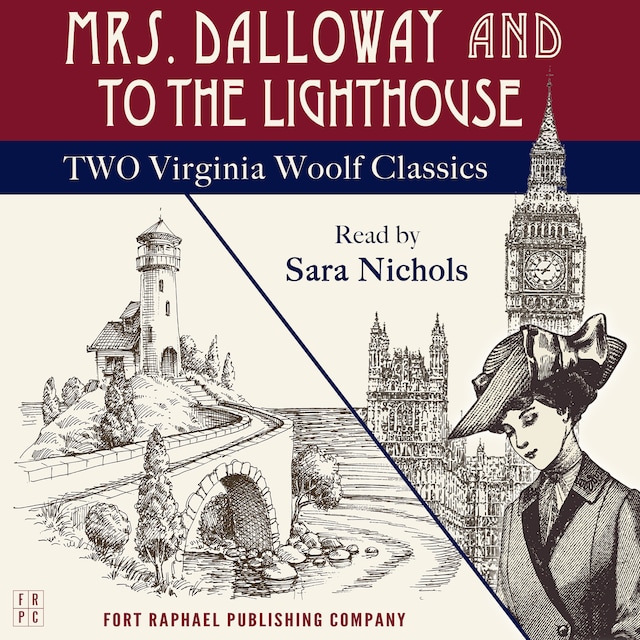
Mrs. Dalloway and To the Lighthouse - Two Virginia Woolf Classics - Unabridged
Beskrivning av boken
Presented here are two of the most important books of the early 20th Century by one of the most original and groundbreaking writers of her era, the feminist literary pioneer Virginia Woolf.
First, the 1925 sensation "Mrs. Dalloway," the breakthrough novel that solidified Woolf's reputation as a fresh, new voice of her generation. Written in a new style - soon dubbed "stream-of-consciousness" - the book details a day in the life of Clarissa Dalloway, a British socialite in post-First World War England. Originally written as "The Hours," Woolf's novel was based on two earlier short stories, "Mrs. Dalloway in Bond Street" and "The Prime Minister." The book takes place in a single day and follows the eponymous lead character as she prepares for and hosts a party. Looping backwards and forwards in time, the reader is given a glimpse inside the mind of Mrs. Dalloway - and some of her party guests - as they goes about their day. Received with rapturous reviews upon its debut, Mrs. Dalloway was included on Time Magazine's list of the 100 best English-language novels ever written.
Also included in this volume is "To the Lighthouse," which was published in 1927, just two years after Mrs. Dalloway was released. To the Lighthouse is Virginia Woolf's experimental and brilliant third novel and concerns the annual visits by the Ramsay family to their summer home in the Isle of Skye in Scotland between 1910 and 1920. Once again employing her unique, stream-of-consciousness style, Woolf creates a fascinating and complex novel where the point of view of the narration switches between the various Ramsay family members and their guests. This semi-autobiographical book was hailed in its time as a breakthrough work of genius by critics, has gone on to become one of the most beloved and carefully studied books of all time and has been named by both Modern Library and Time Magazine as as one of the 100 best English language novels of the 20th century.


